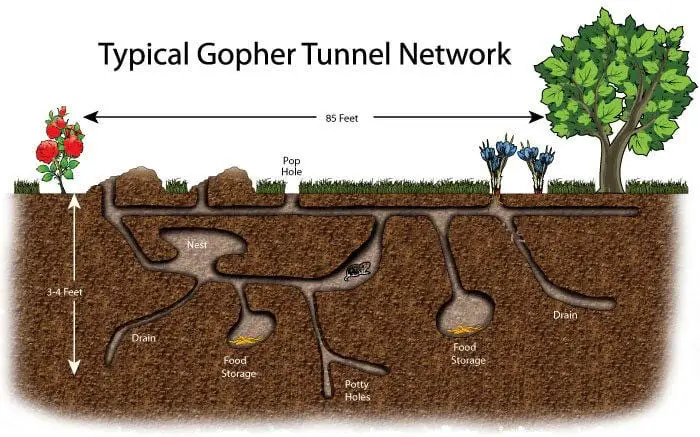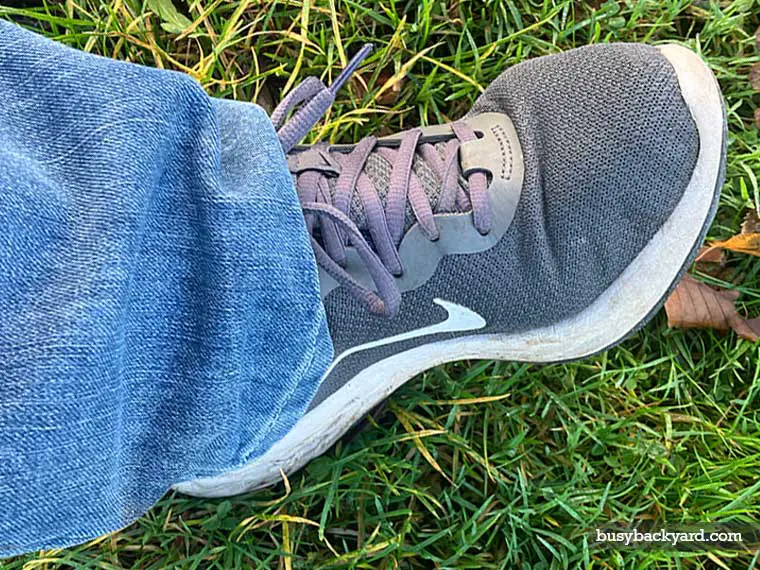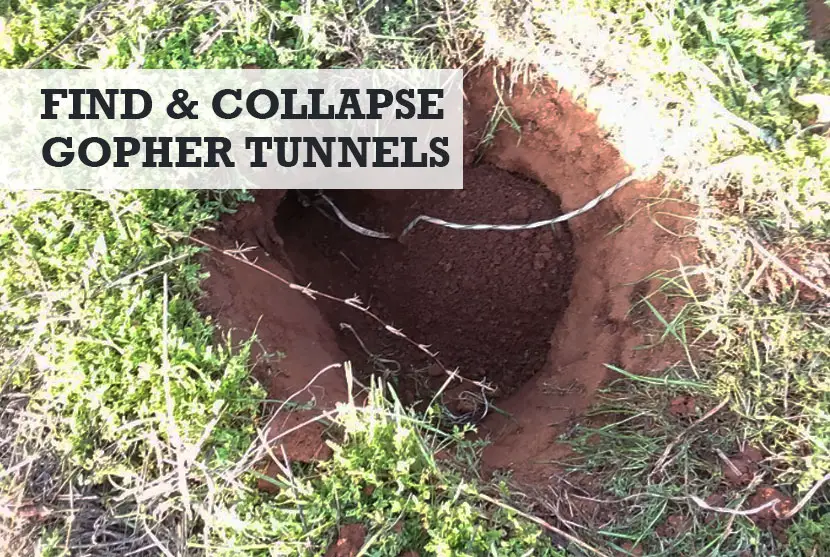Waking up one morning to see a tell-tale mound on your backyard lawn is enough to make anyone tear their hair out. Within days, those mounds will multiply, with the possibility of an extensive gopher tunnel network lurking underneath.
This guide isn’t about getting rid of the critters (that’s here), but instead explains how you can find, destroy, and fill gopher tunnels and get your grass back to how it was.
How to find gopher tunnels first
It’s easy to identify the entrance and exit points of gopher tunnels by the mounds. But there’s no quick way of finding a gopher’s main tunnel and the various directions it runs off into.
Before you collapse the gopher tunnels, you need to find them first. If you don’t do this properly and take your time, you could end up doing more damage to your lawn than the actual gophers did.
To find gopher tunnels, you will need a lot of patience and one simple tool: a steel probe or rod with a sharp tip. If you don’t have something suitable, buy a steel soil probe on Amazon as shown in the image below.
Find the tunnels by poking the rod down into the soil. When you hit the tunnel space, you will feel the rod easily going through the soil. You will know it when you hit it
If there are multiple mounds on top of the soil, start to move towards the first, 3 inches each time, pushing the rod into the earth in what seems to be the most obvious direction. By looking at the mounds, it will help guide you in finding the gopher’s tunnel system.
Another hint is to look at the shape of the mound. Most gopher mounds are horseshoe shaped. You need to stand with the horseshoe in front of you, so you are looking into the open part of the U shape. Now start walking backwards, probing with your rod.
Be aware that gopher tunnel systems will have off-shoots tunnels and rooms. As you can see in the illustration below, there could be rooms for food storage, potty, as well as the main nest.

It can help to step 3 meters out from a mound, then probe as you walk in circular motion, around the 3-meter radius. Doing so will let you figure out if the tunnel system goes any further.
There’s no exact science to it, and there will be some trial and error, and time involved.
How to collapse gopher tunnels
Now you have the tunnel system roughly plotted out, you have several options with which to destroy it with.
I recommend you simply start with the heel of your boot or shoe. It works well if the earth is damp as gopher tunnels are typically no more than 3 inches wide, and between 4 and 18 inches deep.
By pushing your heel hard down, you can collapse most gopher tunnels that are close to the surface. The reason I do this before anything else is that it also helps you probe the tunnel in addition to what you did earlier.

An alternative would be to start digging with a spade. That’s fine, but invariably you can dig in the wrong place and dig a far larger hole than you need. Given the damage gophers can do, you want you to limit the damage you do when destroying their tunnels.
Do be careful though, some gopher tunnels can go as deep as 5 feet underground. But given how narrow they are, chances of you being hurt are very slim.
Another way you can collapse gopher tunnels is by using explosives. This is not a method I have used to destroy a gopher tunnel, so can’t advise on it. There is a video on YouTube though, shown below – I don’t not advise you do this, as could be very dangerous.
How do you fill gopher tunnels?
Once you’ve destroyed the gopher tunnels, they will need filling. You’ve likely got trenches running along your backyard lawn now which need filling.
I fill gopher tunnels with a mix of fine gravel and coffee grounds (it repels gophers from coming back) as an initial layer. I then put top soil in and then re-seed the area – I don’t use concrete or cement, here’s why.
To stop them coming back, I use some of the methods in a guide I wrote last month about ridding your backyard of gophers.
You might also be interested in these guides…
- Smells and scents that gophers hate
- Why I don’t believe Juicy Fruit gum works
- The success we had using castor oil as a repellent
Image used in header by https://www.flickr.com/photos/el_cajon_yacht_club/25058703637


